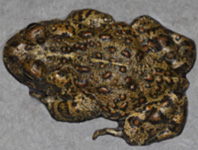Abstract
Karstodiaptomus sheni n. gen., n. sp. is a new stygobiotic species of Calanoida (Crustacea: Copepoda), described from a cave in Yunnan Province, China. It is the first record of stygobiotic calanoids from China and the fourth species from Asia. To accommodate the new species, a new genus, Karstodiaptomus n. gen., was erected. The new species is distinguished from other representatives in the subfamily Speodiaptominae Borutzky, 1962 by the number of segments in the swimming legs P1–P4 (Exp + Enp) as: 2+2, 2+2, 2+2, 3+2, the armature of the antennule, maxilla, maxilliped, and the structure of the fifth leg. The position of the new species in the subfamily Speodiaptominae is discussed, and a brief note on its ecology is added.
References
Brancelj, A. (2005) Hadodiaptomus dumonti n. gen., n. sp., a new freshwater stygobiotic Calanoid (Crustacea: Copepoda: Calanoida) from Vietnam (South Asia) and a new member of the subfamily Speodiaptominae Borutzky, 1962. Hydrobiologia, 534 (1–3), 57–70.
https://doi.org/10.1007/s10750-004-1321-4
Brancelj, A. & Dumont, H.J. (2007) A review of the diversity, adaptations and groundwater colonization pathways in Cladocera and Calanoida (Crustacea), two rare and contrasting groups of stygobionts. Fundamental and Applied Limonolgy/Arhciv für Hydrobiology, 168 (1), 3–17.
https://doi.org/10.1127/1863-9135/2007/0168-0003
Chen, W.H. (2006) An outline of speleology research progress. Geological Review, 52 (6), 783–792.
Culver, D.C. (2012) Life history of evolution. In: White, W.B. & Culver, D.C. (Eds.), Encyclopedia of caves. Elsevier, Oxford, pp. 465–468.
https://doi.org/10.1016/b978-0-12-383832-2.00066-9Elías-Gutiérrez, M. & Suárez-Morales, E. (1998) Redescription of Microdiaptomus cokeri (Crustacea: Copepoda: Diaptomidae) from caves in central Mexico, with the description of an ew diaptomid subfamily. Proceedings of the Biological Society of Washington, 111 (1), 199–208.
Fišer, C., Bininda-Emonds, O.R.P., Blejec, A. & Sket, B. (2008) Can heterochrony help explain the high morphological diversity within the genus Niphargus (Crustacea: Amphipoda)? Organisms Diversity & Evolution, 8 (2), 146–162.
Huys, R. & Boxshall, G.A. (1991) Copepod evolution. The Ray Society, London, 468 pp.
Li, H.M., Han, B.P., Guo, F.F. & Dumont, H.J. (2014) Re-allocation of two south Chinese species of Argyrodiaptomus Brehm, 1933 to Sinodiaptomus Kiefer, 1932, and biogeography of the genus Sinodiaptomus (Copepoda, Calanoida, Diaptomidae). Crustaceana, 87 (3), 328–339.
https://doi.org/10.1163/15685403-00003279
Liu, S.W., Yang, J.X. & Chen, X.Y. (2016) Paralepidocephalus translucens, a new species of loach from a cave in eastern Yunnan, China (Teleostei: Cobitidae). Ichthyological Exploration of Freshwaters, 27 (1), 61–66.
Petkovski, T.K. (1978) Troglodiaptomus sketi n. gen., n. sp., ein neuer Hohlen-Calanoide vom karstgelände Istriens (Crustacea, Copepoda). Acta Musei Macedonici Scientiarum Naturalium, 15 (7), 151–165.
Romero, A., Zhao, Y.H. & Chen, X.Y. (2013) The hypogean fishes of China. Environmental Biology of Fishes, 86 (1), 211–278.
https://doi.org/10.1007/s10641-009-9441-3Shen, C.J. & Tai, A.Y. (1964) Descriptions of eight new species of freshwater copepods chiefly from the Pearl River delta, south China. Acta Zootaxonomica Sinica, 16 (2), 225–239.
Shen, C.J., Tai, A.Y., Zhang, C.Z., Li, Z.Y., Song, D.X. & Chen, G.X. (1979) Fauna Sinica, Crustacea, Freshwater Copepoda. Science Press, Beijing, 450 pp.
Wu, T.J., Yang, J. & Lan, J.H. (2012) A new blind loach, Triplophysa lihuensis sp. nov. (Teleostei: Balitoridae) from Guangxi, China. Zoological Studies, 51 (6), 874–880. Avaliable from: http://zoolstud.sinica.edu.tw/Journals/51.6/874.pdf (Accessed 5 Jul. 2017)
Yang, J., Wu, T.J. & Lan, J.H. (2011) A new blind loach, Triplophysa huanjiangensis (Teleostei: Balitoridae), from Guangxi, China. Zoological Research, 32 (5), 566–571. Avaliable from: http://www.zoores.ac.cn/EN/10.3724/SP.J.1141.2011.05566 (Accessed 5 Jul. 2017)

